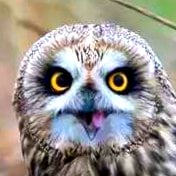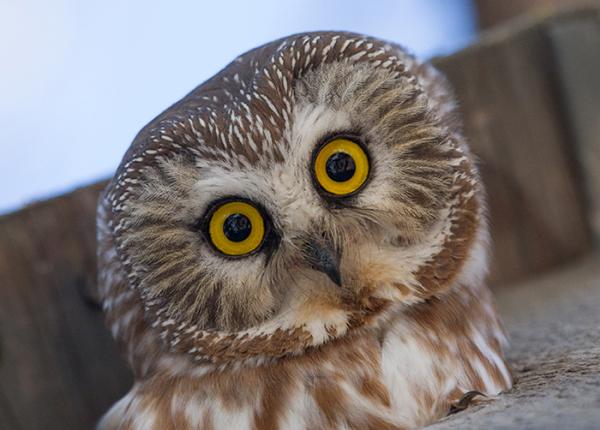From Colossal
Upwards of 17 million commercial flights ferry passengers across U.S. airspace each year. (It’s more than twice that, in total, worldwide.) Those hundreds of thousands of vessels share the sky with winged things that have been around way, way longer than airliners, but it’s not always an easy relationship. Through the work of people like Norman Smith at Boston’s primary international terminal, we’re learning more every day about a remarkable species and their evolving ways of life.
“The Snowy Owls of Logan Airport” (9 minutes long) is a short documentary about Smith’s extraordinary work managing unexpected avian residents. Created by Anna Miller, who also runs The Animalia Podcast, the film highlights the unique migration patterns of the largest owls in North America and why they flock from the Arctic to such an unlikely destination every winter.
Smith has been working with snowy owls at Logan Airport since 1981. “They fly 3,000 miles just to get here,” he says. “We don’t know why they come down to the Boston area. Logan Airport has the highest concentration of snowy owls in the Northeast that we know of.”
The birds’ choice to land at a busy transportation hub might not be as surprising as you’d think at first. It comprises 1,800 acres of open fields, which resemble something like the tundra they call home farther north, full of rats and mice to eat. And on three sides, water provides another ample source of food. It might be loud, but they don’t seem to lose a wink.
Programs like the one at Logan Airport have been in place for decades following tragic incidents in which jet engines ingested birds, causing the planes to crash. One particular event in 1960 in Boston prompted airports around the nation to implement programs that managed bird populations, especially roosting areas, around active airfields. And while shooting avian species has historically been one method of removal, Smith is committed to a much more humane solution: moving them to safety elsewhere.
Snowy owls are considered “vulnerable” to extinction, and their populations are dwindling as the effects of the climate crisis continue to impact habitats in the Arctic. While it’s harder to predict what will happen in the coming years, Smith is dedicated to giving the birds he encounters the best chance of survival.
So far, he has single-handedly relocated more than 900 animals, been instrumental in implementing similar programs across the U.S., and hopes his passion for conservation and the urgent need to save these incredible creatures will influence future generations to do the same.
Just got to watch the video and it was really informative.
Airports used to shoot birds, including the owls, to keep the planes safe. But once the news found out Boston had been trapping them for years and releasing them safely instead, the program spread across the US and Canada. You can see the trap here.
Norman is really passionate talking about the owls, and you of course get to see many beautiful Snowies throughout the video. He tells an exciting story of a Snowy vs Peregrine as well as many other crazy things the Snowies have made their dinner over the years.
He also bands, documents, and studies various things about the birds he catches.
If you’ve got a few moments, I really suggest watching this story!
900 owls, or one really committed owl 900 times?
Hah, there are definitely repeat customers!
During the part of the video where he’s talking about banding them, he mentioned back when he started, people guessed the owls lived maybe 4 years or so, but he got one that he had caught like 20 years later.
Snowy migration seems pretty well studied, at least for an owl, as many owls are just tough to track and observe in general. They don’t always migrate to the same areas like some other animals will, but there are definitely some that like going to the same area every year, and it sounds like Boston is one of those destinations very popular with them.
Job des: Owl mover
<3
He’s the change he wanted to see in the world! 😇


